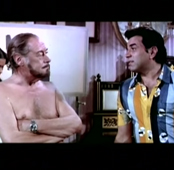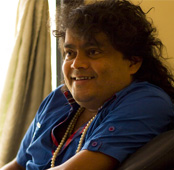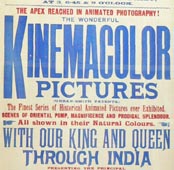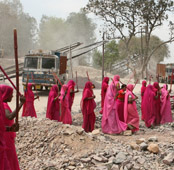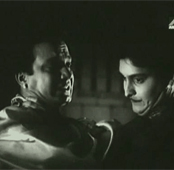-
 ©A.M.P.A.S.®
©A.M.P.A.S.®
TBIP investigates the process by which India’s Oscar entry is chosen and how that might be impacting our chances at the awards
It is the 24th of February, 2013. Jessica Chastain opens an envelope, at the Dolby Theatre, Los Angeles, and reads: “And the Oscar for the Best Foreign Language Film goes to Amour”. An Austrian film by director Michael Haneke. In the 56 times that this award has been contested for, a film from India, the country that reportedly produces more films than any other in the world, has won it— not once. Indian movies have been nominated, in this category, thrice.
Only one movie, from each country, can contest for an Oscar for the Best Foreign Language Film. The selection of this movie, in each country, is overseen by an institution that is authorized to do so by the Academy of Motion Picture Arts and Sciences, or the Academy, which conducts the Oscars every year. In India, this institution is the Film Federation of India (FFI), an autonomous trade body.
On September 22, 2012, Barfi! was announced as India’s entry to the Oscars. Allegations of plagiarism, that had arisen when the film was released, were resuscitated online and in the media. The Oscar for the Best Foreign Language Film is decided through a three-stage process. There is a shortlist of nine movies, five of which are nominated. One wins. Naturally, Barfi! didn’t even make it to the shortlist.
This is not the first time the FFI has been embroiled in a controversy over the selection of India’s entry to the Oscars. Inexplicable choices before include Henna (1991), Indian (1996) and Jeans (1998). On September 28, 2007, Producer Sheetal Talwar and his wife, Director Bhavna Talwar, filed a writ petition in the Bombay High Court, on the grounds that certain members of the jury who chose Eklavya over their film Dharm, were biased.
We set out to find out what lies at the root of these controversies and, through conversations with key FFI officials and jury members, and an examination of related documents, discovered that the problem is not that rules are flouted in the selection of India’s Oscar entry. Rather, that basic rules that would ensure the fairness and transparency of this process have not been put in place to begin with.
THE WAY WE ARE
The FFI was constituted in 1952. It calls itself the “apex body of the film industry” on its website. The first of many objectives it lists here is to “promote, protect and watch over the interests of the Indian Film Industry and allied industries and trades”. The FFI’s members comprise producers, distributors and exhibitors from all over the country, each belonging to one or more of 43 associations that are affiliated with the FFI today. Each association pays a fee to the FFI on becoming an affiliate, and for every year after. Other objectives of the FFI include popularizing Indian cinema abroad; lobbying for laws, grants and governmental treaties with other countries that will benefit the Indian film industry; providing legal aid to its members and safeguarding their rights; and resolving any disputes that may arise between them.
The Academy authorized the FFI to conduct the selection of India’s entry to the Oscars in 1957. Bijay Khemka, the current President of the FFI, says this is too far back in the past to know how or why. “Academy wanted FFI to do it, FFI wanted to take care of it,” he says. “It’s for many years that it’s been going on, so I’m not able to tell you how it started.”
Here is how the selection for India’s Oscar entry is carried out:
- To choose the jury that will select the Oscar entry the FFI first assembles a committee comprising its “(12) office bearers and two to three special invitees”, says Supran Sen, Secretary General of the FFI. These invitees could be “members of another film workers association: the writer’s federation, director’s federation, or any other body— other than the FFI itself.”
- Sen says this committee selects a jury of “11 to 17 members”. Khemka says that after this the members of FFI’s Executive Committee (comprising 80 members who represent, among them, the 43 associations affiliated to the FFI) “okays these names”. According to the Academy’s rules the jury should include “artists and/or craftspeople from the field of motion pictures.” Khemka says that for this jury they “take recommendations from all our bodies (the associations affiliated to the FFI) and we also approach (prospective jurors) on the individual merit of people”. Marathi filmmaker Sandeep Sawant, who was a member of the last jury, adds that the jury is meant to be representative of every region of the country: “They are not just from Bombay, (but from) all over India. They represent maximum regions from India—South, Bengal, Punjab, Assam, Maharashtra, Delhi—of course, you can’t have one from every state, but you have people representing various languages and regions.” The Jury elects one of its members as Chairperson as soon as it has been created. The FFI has to send the list of jurors to the Academy two months before the deadline for the Oscar entry.The Academy’s rules with regard to this process can be found here and here.
- To call for entries, says Khemka “we (the FFI) issue notices (to various film related bodies), we put it on our website also and we inform all the state bodies to inform their producer members, if anybody wants to apply for Oscar.” The date, place and mode of submission (a form has to be filled with details regarding the film; a print of the film has to be sent in; a service charge has to be paid) is outlined on their website.
- Entries may be received by the FFI directly, or received by one of the affiliated bodies and forwarded to the FFI within the due date. The films that fulfill the criteria laid out by the Academy are seen by the jury.
- To qualify for the Best Foreign Language Film category, a film has to be of feature length (above 40 minutes); it has to be, predominantly, in a language other than English; it should have been released in the country submitting it during a particular period (for the 2013 Oscars, the film should have been released between October 1, 2011 and September 30, 2012); it should have run for at least seven consecutive days in a commercial movie theatre, for the purpose of earning profit; the film should be submitted in the format specified by the Academy; it should have English subtitles; and the FFI must certify that the creative control of the film lies with India’s own citizens.
- The films that have been submitted are watched by the jury together. The jury then decides whether to select one out of all of these films or carry out the selection in two stages. If the jury decides on the latter, then it agrees on a shortlist of films first, and then selects one out of the shortlist. There are discussions on the films before them. India’s Oscar entry is finally selected either by a formal vote, or by a consensus that emerges out of these discussions. So the process of selection varies from jury to jury and is often suggested by the jury chairperson.
But how many films should the jury shortlist, when such is the case, before it selects the final film? Should there be a secret ballot in case of a vote? Are there any guidelines for how the jury should be selected, to ensure that no jury member is biased towards a film that is in the running?
These questions remain unanswered. The first notable public mention of guidelines for the selection of the Oscar entry came up during the Bombay High Court hearings on the writ petition the Talwars had filed. The Court directed that the FFI should prepare draft guidelines for the selection process. On December 18, 2007, the counsel for the FFI submitted before the Court that the FFI “had framed the draft guidelines and regulations” and prayed “for time to place the same on record”.
After the last hearing on July 17, 2008, the Court noted that: “Pursuant to the directions of this court, guidelines for selection of films for the Academy Award have been suggested by the Advocate General, Maharashtra (Ravi Kadam). We hope that the respondent Authority will take (these into) consideration in order to avoid any arbitrariness in the process of decision-making which is just and fair.”
Sen claims these guidelines have been put into place, yet he refuses to let us know what they are. “That’s actually confidential,” he says. “Those are our own guidelines.”
However, he says: “We see that there is no interested party (on the jury). That is a very very important factor. That is why this hullabaloo with Vidhu Vinod Chopra’s film (Eklavya) occurred.”
The bodies overseeing the selection of the Oscar entries in other countries put out the guidelines that govern this process in the public domain. In Italy press releases are issued for every stage in the process: the call for submissions, the short list of films and the announcement of the winner. The concerned bodies in countries such as France and Germany have detailed guidelines for the selection of their jurors as well as those for the selection of their Oscar entry on their websites.
Selection committees from all of these three countries also release the names of the jurors who select their Oscar entry once the process is completed (here are the jurors for this year’s entries for France, Italy and Germany.
France has been nominated 35 times for the Oscar (more than any other country). It has won 12 times. Germany, since its unification in 1990, has been nominated for the award 9 times and won the Oscar twice (before its unification, West Germany was nominated for the Oscar eight times and won it once, while East Germany was nominated once). And Italy has won 13 Oscars— more than any other country in the world.
When asked, FFI officials Khemka and Sen agree to give us the names of the chairpersons of juries that have selected India’s Oscar entry in the last couple of years. But they refuse to disclose the names of any other jury member.
When questioned about this, Khemka says: “This is a process where the general public don’t come into the picture, because it’s an internal process. Like when the Oscar Award is given and the Oscar selection is made and there are 5000 people to select the Oscar Best Picture and nobody knows who they are.”
But here the jurors comprise only 11 people. When it was pointed out that the names of all the jurors are released in other countries he said: “Nahin (No), even we call the press conference. All the jury members are present there and they announce the best picture (India’s entry). So it is known.”
Yet neither Sen, nor Khemka tell us who the jurors on the last jury, which chose Barfi! as the official Oscar entry five months ago, were. Most media reports have only the name of the jury chairperson Manju Borah. While some news reports have cited the name of another juror, Marathi filmmaker Sandeep Sawant, neither of the FFI officials confirm this— even though Sawant does so himself, when TBIP speaks to him.
Says Sen: “The basic simple reason is— suppose there are say 11 jury (members), then the press start telephoning everybody and then out of their minds they say this happened. That is why the whole problem was there that time. Nobody except the Chairperson (is revealed). Because then everyone approaches each individual jury (member) and says: How did you find…yeh-woh (one movie or the other). Sometimes they force them. So we don’t tell.”
Revealing the names of the jurors, after the selection has been announced, ensures the accountability of the FFI. It allows the public to gauge for themselves the qualifications and standing of those who select India’s entry to the Oscars. It seems impossible that the press can “force” jury members to reveal who they voted for, or even talk to them, against their wishes, but perhaps, if the names are in the public domain, the press can question the jurors about whether the selection was carried out in a fair manner. Also, putting out the names ensures that if any jury member has actually been professionally involved in a film that he has voted on— people will find out.
This was what had happened at “that time”— as Sen puts it. It was five years ago, during the selection of India’s entry for the 2008 Oscars. Here is what appears to have transpired.
ADHARM
In September 14, 2007, before Eklavya had been officially announced as India’s entry to the Oscars, Producer Sheetal Talwar was at the airport. Talwar remembers the date because an India-Pakistan match was on. “I had already gotten a call from Supran Sen saying: ‘Sheetalji, we are going with Eklavya and not with Dharm’.” he says. Then, says Talwar, he got a call from Producer-director Vinod Pande, who was chairperson of the jury that had taken this decision. “Sheetalji, I just wanted to tell you, I was trying to watch the India-Pakistan match, and I can’t, because I think an injustice has been done,” is what Talwar claims Pande said.
Another Jury member, cinematographer Nadeem Khan, called Bhavna Talwar soon after this, to congratulate her on Dharm. “I just want to tell you that I loved your film and if I had my way it would have gone as our entry,” is what Khan says he said to her. The Talwars spoke to the two jury members and found out who else was on the jury.
After the decision was announced officially, on September 25, the Talwars filed a Bombay High Court writ petition, on September 28, praying that the Court should review the jury’s decision to send Eklavya to the Oscars. Respondents in the case were the FFI, Vinod Chopra Films Pvt. Ltd., which had produced Eklavya, as well as the 11 jury members.
Because of this case, the names of all the jurors who chose India’s Oscar entry in 2007 are in the public domain. The 11 jurors were producer-director Vinod Pande, writer and lyricist Jalees Sherwani, cinematographer Nadeem Khan, filmmaker Anil Sharma, producer Bijoy Kalyani, producer Ravi Kottarkara, costume designer Shahid Aamir, film editor Ranjit Bahadur, producer-director Jagdish Sharma, music director Ravi Sharma and filmmaker Sudhir Mishra.
The Talwars alleged in their petition that one of the jury members, Bahadur, was biased towards Eklavya as he was involved in editing a documentary on the making of the film, which was used to promote the movie, and that two other jurors, Mishra and Jagdish Sharma, were biased because they were close to Vidhu Vinod Chopra, the producer and director of Eklavya.
There were six hearings, according to court records, up to July 17, 2008, when the petition was dismissed with a note to the FFI to take the guidelines suggested by the Advocate General into consideration.
The Academy learnt of the case. On October 10, 2007, Bruce Davis, then Executive Director at the Academy of Motion Picture Arts and Sciences, wrote a letter to Pande which read: “In fact it turns out that there is a widespread feeling among Indian filmmakers and the public that your committee could have been more sensitive to ethical issues in making its decision—if there were in fact one or more members who should have recused themselves from this year’s voting—then we are confident that your group will establish more readily defensible internal standards for future years.”
Pande and Davis exchanged letters over the next few days, in which Davis offered to allow the jury five days to “either reaffirm its original choice or designate a different Indian entry”. But since the Court had not come to any sort of conclusion by that time, this was not to be. TBIP has procured a copy of these letters from a source who wishes to stay unnamed.
Two of the 11 jurors, Jagdish Sharma and Ravi Sharma, have passed away. TBIP spoke to five of the remaining nine. Here are excerpts from the conversations.
Vinod Pande – Jury Chairperson, 2007
Pande has been on the jury for India’s Oscar entry thrice. Here, he suggests that some jurors who seemed to prefer Dharm voted for Eklavya instead. And that they might have voted for Dharm had he called for a secret ballot instead of an open vote.
TBIP: What happened?
Vinod Pande: Okay it’s history, so perhaps we can speak about it. You see, when the films were seen, the heart, the sentiment of almost all had immediately gone to a film called Dharm. It was a very competent film, a very poetic film. And in our view it represented India precisely. It dealt with those fault lines of India which are affecting us. Normally we have obtained a consensus (the last two times that he was on the jury) by following a tradition ki koi voting nahin honi chahiye (there shouldn’t be any voting). In any such organization, especially in creative exercises, although democratic processes warrant an exercise like voting, you try not to. You want to give the impression that it was unanimous. So we tried to avoid it. So in order to avoid it I have always followed a method that I tell members that, rather than a (quick) general discussion, there will be extensive discussion on all the films we have seen. So that they are then able to precisely zero in…
TBIP: On the merits…
VP: Ki merit kahaan ja rahi hai (where does the merit lie). And we were able to do it. And we were clearly able to see that Dharm was… (our choice) And so there wouldn’t have been any voting and it would have gone. But someone mentioned: “Sir ab voting karenge (now we’ll vote)”. Now if a member insists, then you’re caught. Because you have to put it to a vote. I was very sure (that Dharm would win). Most of the members were praising Dharm. There was a member who said “Sir poetry thi” (It was poetry). Their sentiment was so clear. One of the jurors said: “Sir, can I give 3 names?” (I said) Go ahead. He says, “No. 1 Dharm, No.2 Dharm, No. 3 Dharm.” I mean such was the commitment.
Then I was taken by complete surprise. Some jury members who were praising Dharm voted for Eklavya instead. And while voting, you can have a secret ballot. And the mistake that I ended up making was, that was my mistake because I had never envisaged this, you know. I said: No let’s have an open ballot. Agar main secret ballot karata to shayad yeh film (Dharm) ho jaata (if I had asked for a secret ballot then maybe this film—Dharm—would have been selected).
Nadeem Khan – Juror, 2007
Khan says that one of the jurors, whom he would prefer not to name, was insistent on choosing Eklavya because its producer had the infrastructure and money to lobby for the film in LA. Khan also claims that Vidhu Vinod Chopra called Khan about the film more than once, and that Chopra’s production manager came to meet him with promotional material.
Nadeem Khan: What rankled me was that, from day one, there was this one gentleman, who came in with an attitude ki bhai falaani film jo hai, uska jo producer hai, wahi (that this particular film, its producer— he’s the one), he’s got the infrastructure, he’s got the money to lobby in L.A. The guy under question is my class fellow (Vidhu) Vinod Chopra. The film in question was Eklavya. So I told him: “Let’s all first see the film and then we’ll decide. Why are you blowing a trumpet prematurely?”
This gentlemen who I’m speaking about, during the course of our screenings, made it a point now and then to talk about how Eklavya was the only suitable film as our entry to the Oscars because infrastructure L.A. mein Vinod ka itna accha hai (because Vinod’s infrastructure in LA is so good)… There was a very strong lobbying for Eklavya.
In fact, Vinod (Vidhu Vinod Chopra) had rung me up also before this: “I’m a class fellow yaar. So it goes without saying ki tu toh, yaar, hai mera dost hi na (that, after all you’re my friend right)?” And I said, “Vinod, let me just see the film.” “Of course, yaar.”
Vinod used to ring me up three times a day. In fact, he sent his production manager. I was shooting in Juhu somewhere and he came with a pamphlet. At that point in time, we had not started seeing them (the films). Vinod is my friend. He tells me, “Ay, listen man, my film’s coming in.” I’m being preconditioned right? 50%. So when that guy came in I said: “Isko le ja yaar tu (take this away man). Mere friend ne mujhe phone kiya (my friend has phoned me). End of story.’
TBIP: How did Vidhu Vinod Chopra find out that you were on the jury?
NK: You ask him that. Don’t ask me. He rang me up even before I started this thing (the jury’s process). He said: “Boy, you’re on a jury”. Maybe someone told him. I don’t know. I didn’t tell him.
Jalees Sherwani – Juror, 2007
Sherwani says he received phone calls from a production house, which he doesn’t want to name, saying they wanted to meet him and “give details” and tell him “how much” they had done for a film that was trying to be India’s Oscar entry. The person making the phone call knew he was the jury member the day before he knew this himself.
Jalees Sherwani: I was not liked by everyone who participated because they could not influence me. Many people tried, but I politely refused, said they had a wrong number, or that somebody else has given them wrong information about me.
TBIP: Were you getting phone calls? Before the actual selection process began?
JS: Yes, yes, yes.
TBIP: When we spoke to Mr. Supran Sen. When we asked about this time’s jury members, he said the FFI had decided not to give out their names. So how did someone find out in this case?
JS: Definitely it was leaked. I mean before I knew that I was a jury member I was informed by a production house, saying: “We want to met you and give details and explain how much we have done for this film and what kind of film it is.” I said: “I don’t understand, why are you bothering me?” “No, no sir you are the Jury member.” I said: “Gentlemen, let me know if it is so, because I have no information about it.” And next day I get a phone call from FFI that you are a Jury member and from so and so date we are having these screenings and please join… I mean, you can call it dubious, you can call it a leak, you can call it whatever word you feel that is suitable for this kind of irregularity— which is dishonest.
TBIP: Are you saying sir that the jury could have been biased— because people knew who the jury was?
JS: Possibly the decision was influenced. When they can make the call to me, they can make the call to other jury members as well. I didn’t get influenced, but somebody else could have been influenced by them.
TBIP: Sir do you remember which production house?
JS: No I cannot say that
TBIP: You can’t say that?
JS: No.
Sudhir Mishra – Juror, 2007
Mishra says that “‘bias’ is an ambiguous word” that can’t really be proven in the Indian film industry where so many people have worked together in the past, or are friends. But he warns against a scenario where a juror has been professionally involved in the film he or she is judging. Also, he recommends a secret ballot and a larger jury. He agrees that juror’s names, as well as the selection procedure, should be in the public domain.
TBIP: Bias was alleged against you as well as other jurors in a writ petition filed in the High Court.
Sudhir Mishra: The Sheetal Talwar and…
TBIP: Sheetal and Bhavana Talwar were the ones who filed it. How would you react to that?
SM: The voting should be kept secret. How do they know who I voted for? And then when you say ‘bias’ it’s a very ambiguous word. What does this bias mean? I don’t even know what happened to that case…
TBIP: The Court dismissed the case and asked the FFI to look into it and institute guidelines for the selection procedure.
SM: I think the FFI should get a clear set of guidelines. Guidelines that make the process transparent and fair. And the jury should also be larger. There should be a very strict guideline that no jury member should be involved in a film he is (judging)… but what do you do in the case of a friendship? When a jury member happens to be friends with a filmmaker (whose film he is judging)?
TBIP: Because many jurors could be friends of filmmakers whose films have been submitted, or could have worked in the past with such filmmakers on other films, if not the one they are judging?
SM: That’s right. That is why you should have a larger jury, with top-notch professionals from various branches of films and various regions. And voting should be by secret ballot. But you’ll always have this problem, that so-and-so editor has worked with so-and-so director, three years ago. Unless someone has actually been professionally involved with a specific film, how do you determine bias?
TBIP: Do you think that the names of the jury members should be put out in the public domain…
SM: Definitely. The names of the jury members should be put out in the public domain, after the process is complete. But this is the reason why I will never be part of a jury in India again. Because then I’ll be subject to pressure, and abuses from people. If your friend’s film doesn’t go, you will say Sudhir Mishra was part of the jury and he was biased.
TBIP: But if there’s a secret ballot, and no one even mentions how many votes a film won by, then no one will know who voted for what.
SM: Yes, maybe if an objective agency counts the vote.
TBIP: Like the PwC (PricewaterhouseCoopers) for the Oscars?
SM: Yes.
Ranjit Bahadur – Juror, 2007
Bahadur says he wasn’t asked whether he had been professionally involved with the films he was judging.
TBIP: Why didn’t you say that you had worked on a promotional documentary on the making of Eklavya?
Ranjit Bahadur: The fact is that I happened to work with the line producer of the Dharm movie too. I worked (with the line producer) before this film. I worked even after the controversy. So I don’t know, it didn’t occur to me. I didn’t provide any false information. They didn’t ask me that: “These are the films that are going to be there.” I thought we would just watch movies and the only time I speak my mind is when I see a film and I thought it was a serious panel discussion and I put forward my views strongly. Beyond that I don’t know anything.
Despite repeated efforts to reach him, Vidhu Vinod Chopra was not available for comment. TBIP contacted the CEO of Vinod Chopra Films Pvt. Ltd., who replied with an email saying: “Vinod is out of the country and not available as of now. I will not be in a position to comment on his behalf or on behalf of VCF.”
(TBIP has some jurors, on record, talking about who voted for which movie. It has decided not to put this information out because the scope of this article is not to try and decide a case dismissed by the High Court. It is entirely futile to try and determine if the jury or Chopra were in the wrong in the absence of clear rules defining right and wrong in this scenario.)
Today, Supran Sen says the FFI “always takes a declaration from each jury member that ‘I’m not at all concerned (connected with a film that is in the running in any way)’. This time (while assembling the jury for the 2013 Oscars) also there was one (interested party)— but it was sorted out.”
But there is no way for us to ascertain this as, other than the jury chairpersons, we don’t know the names of all the jury members on any of the juries that succeeded this one.
Also, a juror may be biased towards a film even if he or she has not been professionally involved with it (for instance, if he or she is a relative or friend of the film’s producer, or director, or crew member, or is working with such a person on another movie). The best way to ensure the objectivity of such jurors would be to put in place a system of secret ballot— so jurors have to fear neither the discomfort of voting against a friend, nor the reprisal of a powerful producer.
As for the phone calls allegedly received by jurors (and, as in the case of Khan, the visitor on his film set), what exactly are the rules laid down when it comes to lobbying for one’s film?
The Academy, when it comes to lobbying for the Oscars, lays down that: “The picture must be advertised and exploited during its eligibility run in a manner considered normal and customary to the industry”. For the award for the Best Foreign Language Film, the Academy’s general committee, which votes on the films, is divided into 3 groups and each group is given a list of films to watch, of which they should have watched 80% to be able to vote in this category. So Academy voters might miss a film unless the producer publicizes it avidly, and holds screenings for it. This, however, is not the case with the FFI, which facilitates and ensures that the jury for India’s Oscar entry sees every film that is submitted.
Here, the FFI should lay down clear rules that say that a producer whose films have been submitted to the jury for India’s Oscar entry should not try to influence a jury member to vote for his or her film. If such an attempt to influence him or her is reported, and can be proved, by the jury member, the film in question should be disqualified.
Also, a producer’s infrastructure, and resources that allow him to lobby successfully in LA, may be relevant when it comes to determining India’s Oscar entry, but considering we’re a country of so many talented filmmakers with meager resources, it falls upon the FFI to institute a fund, with the aid of the government, that allows a producer to lobby abroad to ensure that India’s Oscar entry stands a fair chance at the world’s most prominent film awards.
But the real question here is, if the names of the jurors are part of an “internal process”, as FFI President Bijay Khemka says, how did those making the phone calls alleged above find them out— in one case, before the juror in question knew of his appointment himself?
When TBIP tried to put this question, and these suggestions, to FFI Secretary General Supran Sen, after the interviews with the jurors, he refused to answer any more questions related to the Oscars.
BITTER SWEET
It is 2013. And little seems to have changed since 2007. The jury that selected India’s entry for the Best Foreign Language Film at the Oscars this year watched 20 movies at Hyderabad before deciding on Barfi. When asked who the other jurors were Jury Chairperson Manju Borah says: “That committee (the jury) has been dissolved and according to Film Federation (of India) rules, I’m not supposed to talk (about this) now because I was hired for that period of time only.”
Borah does mention, however, that she kept the vote “open”.
Manju Borah: We were, in total, 11 jury members, working in different fields of filmmaking.
TBIP: When you were selecting the films was it a secret ballot or was it just…
Manju Borah: It was open and (the voting was conducted) after a lot of discussion, round after round of discussion.
TBIP: So you just had a show of hands? You just raised your hands?
MB: Yeah, yeah.
Marathi filmmaker Sandeep Sawant was also on the jury that selected Barfi! He points out another discrepancy in what we have learnt so far. While FFI office bearers Khemka and Sen, as well as Borah, have said there were “11 jurors” in this jury, Sawant says there were not 11 but “14 or 15 jury members” present.
Sawant also says—as did Khemka—that the names of the jurors are let out to the press as soon as the film is selected. “When the result is declared, all the Jury members are there and the whole press is there,” he says. “Each member of the Jury is introduced. It’s not like it’s announced secretly.” But again, like Khemka, he refuses to reveal the names of his fellow jury members in 2012.
THE TIMES THEY ARE A-CHANGIN
Many countries have changed the way they select their Oscar entry. East and West Germany had to overhaul and merge their selection processes after the unification. In Italy, the Associazione Nazionale Industrie Cinematografiche Audiovisive e Multimediali (ANICA), a trade association of producers, distributors and film technicians very similar in nature to the FFI, has revised their system of selection twice— when the responsibility for selection was shifted from a 8 to 10 member group, selected by ANICA from among members of the Italian film industry, to the jury of the David di Donatello (Italy’s most prestigious film awards) in 1998; and when this responsibility reverted to a 15 member jury selected by ANICA again, in 2005. The Academy itself, after it faced criticism for not including acclaimed films like 4 Months, 3 Weeks and 2 Days and Persepolis in the Best Foreign Language Film shortlist in 2008, revised its selection procedure for this category from a two-stage to a three-stage voting process.
We know of these changes because they are in the public domain. Because we have been informed about them. But the FFI is less forthcoming about its plans. “We will revise the process as and when we need to,” says Sen, assertively. “We don’t need to revise it every year. And this is an internal matter. We can’t disclose it to the media.”
The Big Jinx
ArticleFebruary 2013
 By Alyssa Lobo
By Alyssa Lobo
Alyssa Lobo is Junior Correspondent at The Big Indian Picture
 By Meryl Sebastian
By Meryl Sebastian
Meryl Sebastian is Trainee Correspondent at The Big Indian Picture




